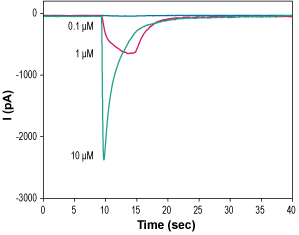Overview
- Barnes, N.M. et al. (1999) Neuropharmacology 38, 1083.
- Arreola, R. et al. (2015) J. Immunol. Res. 2015, 354957.
- Lin, S.H. et al. (2014) Clin. Psychopharmacol Neurosci. 12, 196.
- Gaffney, R.R. et al. (2015) Case. Rep. Gastroenterol. 9, 132.
Serotonin is the endogenous agonist of 5-HT receptors and the endogenous substrate for the synthesis of a number of molecules, such as melatonin, formyl5hydroxykynurenamine, and 5hydroxyindoleacetic acid.
Serotonin (5HT), also known as 5hydroxytryptamine is a monoamine derived from tryptophan. Primarily, serotonin can be found in the gastrointestinal tract, blood platelets, and the central nervous system (CNS)1. Only 2% of serotonin is present in the CNS where it plays an important role in the etiology of many mental disorders. 5-HT also plays an important role in regulating mood and social behavior, appetite, sleep, pain, bone density, tissue regeneration, platelet aggregation, gastrointestinal function, memory and sexual desire and function1,2. In addition, serotonin affects the immune, gastrointestinal and nervous systems in a paracrine, endocrine, and juxtacrine manner2.
An extensive use or overdose of serotonergic drugs can lead to a rare life threatening syndrome called serotonin syndrome that includes mental status changes, neuromuscular abnormalities and autonomic hyperactivity3.
Serotonin hydrochloride (#S-165) is a highly pure, synthetic, and biologically active compound.


